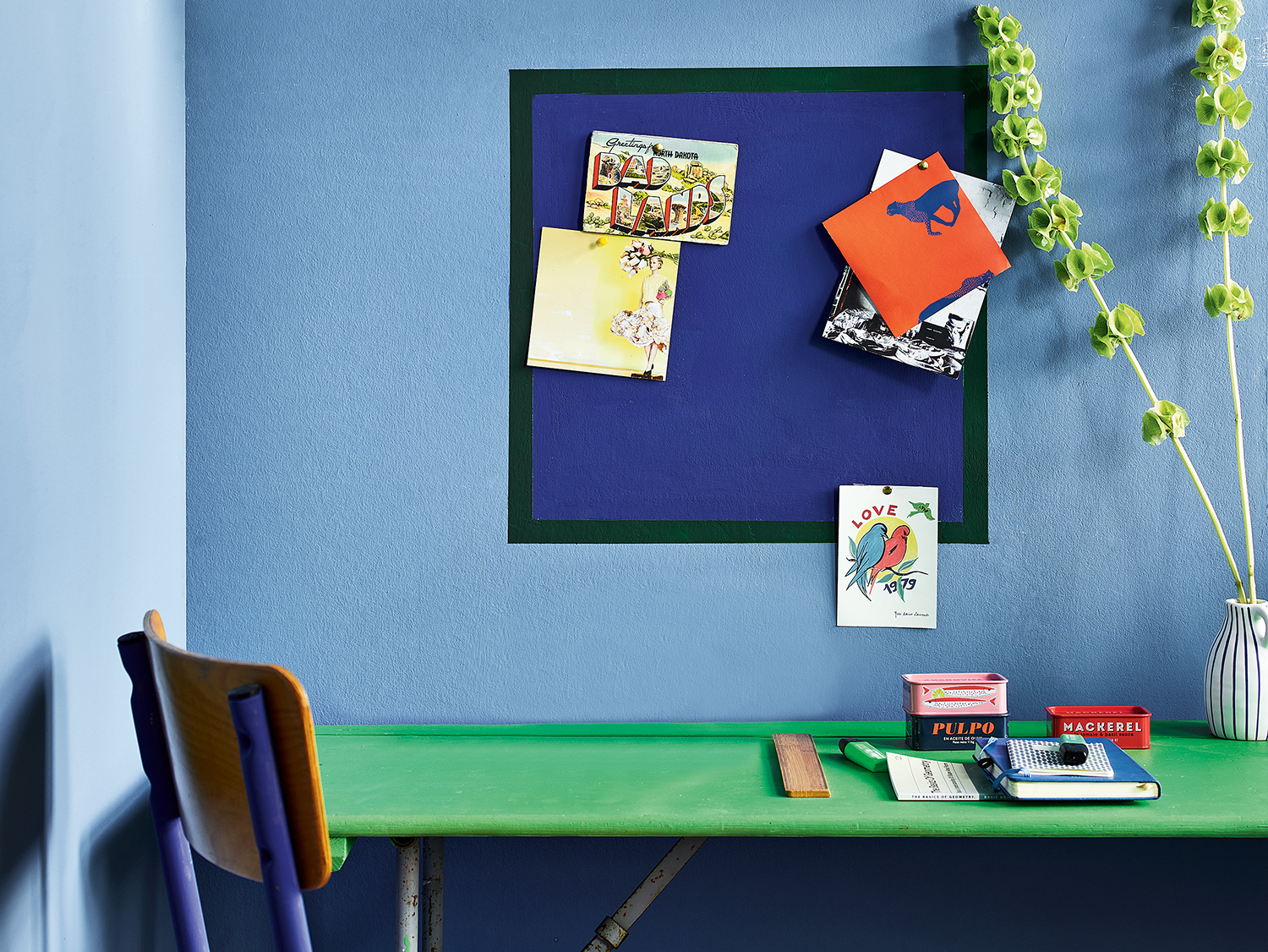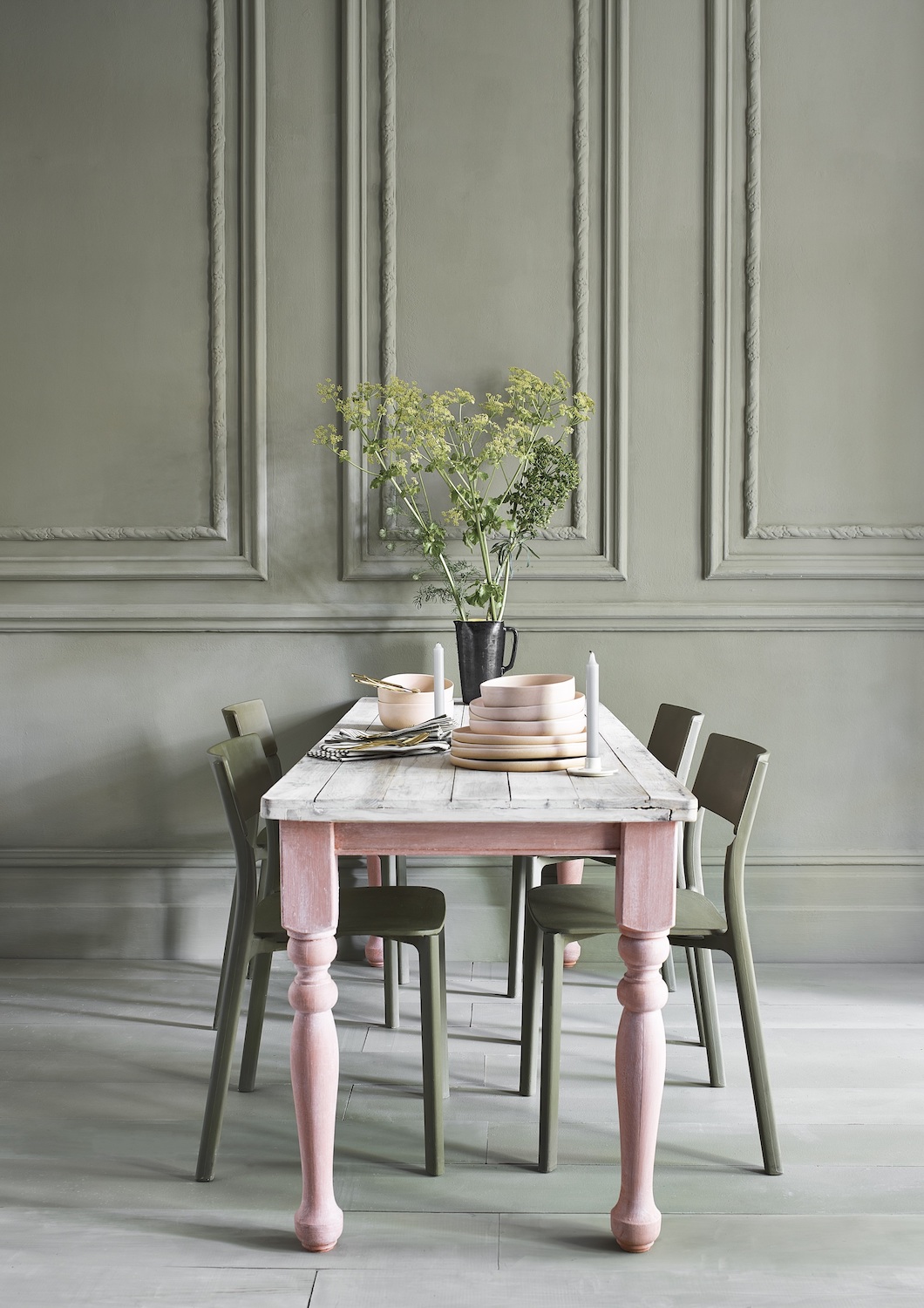How to make chalk paint - it's easier than you think to affordably overhaul your furniture and walls
Knowing how to make chalk paint is a smart and savvy way to overhaul your home and furniture with a stylish matt finish

Whether you have considered how to make chalk paint or not, you can't have missed this gorgeous matt finish gracing surfaces in the most stylish of modern homes.
Catapulted into consciousness four decades ago by British color expert Annie Sloan with her popular palette and trademarked collection, chalk paint has weathered the vagaries of interior design trends and paint ideas to become a style staple.
As well as its beautiful matt finish, chalk paint is loved for its ease of use. This has made it a favorite with creatives and those who love to restore or refresh furniture.
'The great thing about chalk paint is that it’s easy to use, incredibly versatile, and can be applied to almost any surface, including wood, metal, plastic, fabric or leather, ceramic or glass, walls, and floors, with almost no prep work or priming required,' says Molly Gaviston, founder of Vintage Tonality.
'It's one of the most popular ways to update outdated furniture. Chalk paint dries quickly to a matte finish, can be easily distressed, and can give you a smooth, blended, or textured paint finish depending on how you apply it. Chalk paint allows you the flexibility to apply a completely different look and feel to each new project.'
The only downside with ready made chalk paint is that it can be pricey, which is why social media is awash with those who have made their own for a fraction of the cost. So what do you need if you want to make your own chalk paint?
How to make chalk paint

There are numerous DIY chalk paint recipes that use calcium carbonate, plaster-of-paris or even crushed chalk sticks as additives, but which is best?
The Livingetc newsletters are your inside source for what’s shaping interiors now - and what’s next. Discover trend forecasts, smart style ideas, and curated shopping inspiration that brings design to life. Subscribe today and stay ahead of the curve.
'We discovered that recipes containing calcium carbonate mixed with flat latex paint came the closest to reproducing store bought chalk paint and are the most cost effective,' says Molly at Vintage Tonality.
'We also love the flexibility to thin or thicken the paint depending on your personal preference, as well as creating blends with paint. Calcium carbonate is safe to use and handle and can be found in a variety of grocery store products. Although, calcium carbonate in dust form can irritate the eyes and nose, so wear a mask if you're using it.
'Paint mixed with plaster-of-paris tends to spread a little bit harder over surfaces and hardens more quickly. It sticks well to most surfaces but creating blends is more difficult because it hardens so quickly.
'Since it's made up of plaster, we find that when mixed with paints it does not store well due to thickening. Even adding water to the paint after being stored we still found the paint to be a bit too lumpy and overall it didn't spread well after first use.'
What you'll need to make your own chalk paint
An empty quart can with a lid (available here at Amazon)
Latex water-based paint in a color of choice
Calcium carbonate powder by Greenway Biotech, also available here at Amazon
Pure talcum powder (unscented), available at Etsy
Bowl for mixing
Wooden stick for mixing
Rubber gloves and protective face mask
Instructions
Pour the latex paint into the quart can, so it's around 2/3 full.
Mix separately in a bowl 3/4 cup of Calcium Carbonate powder and a 1/2 tablespoon of talcum powder with hot tap water. Slowly add water and mix until you have a consistency similar to ranch dressing.
The more Calcium Carbonate you add the more chalky the paint will become. Add or subtract depending on your personal preference.
Add the Calcium Carbonate/talcum powder mixture to the paint, stir and then top off the can with just a little more paint.
Stir well and you’re ready to paint with your homemade chalk paint.

Is making chalk paint worth it?
As you can see from the steps, making chalk paint is not difficult or labour intensive to do. But is it worth it, by the time you've bought the 'ingredients'?
'Making your own chalk paint costs roughly a third of the price of premium brand Chalk Paint, which costs around $42 per quart and is sufficient to paint a small dresser,' says Molly at Vintage Tonality. 'Other brands sell comparable products for around $8 per 8-ounce jar.
'However, a gallon of latex all-in-one paint & primer by Behr costs just around $30 and yields 4 quarts. With our recipe, that will make you four different variations of chalk paint at a fraction of the cost.'
Another advantage of making DIY chalk paint over using store bought is that the color options are virtually limitless.
'Any color you adore at your local paint store can be used to make chalk paint,' says Molly. 'Mixing your paint colors at home allows you to achieve the exact color you desire, every time, for even more customization.
'If you want a more traditional chalk paint finish, we recommend going with a flat matte finish. Satin, semi-gloss, or gloss finishes will also work for those who are feeling creative or want a specific look and feel.'
Jacky Parker is a freelance lifestyle journalist and writer, producing a wide range of features for magazines and digital platforms. She has written for Livingetc and its sister titles, Homes & Gardens and Country Homes & Interiors for more than 15 years, both as a freelance contributor and as Acting Digital Editor and Acting Style Content Editor, regularly reporting on the latest interiors, gardens and wellness inspiration, speaking to experts in their respective fields, and discovering the best tips.
Jacky has also written for other publications, including Sunday Times Style, The Telegraph, Architectural Digest, House Beautiful, ELLE Decoration, Red, Grand Designs and more.